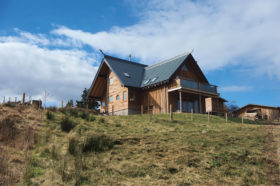
Use code BUILD for 20% off
Book here!
Use code BUILD for 20% off
Book here!Last month I was writing about the little victory won with the exemption for self and custom builders from the S106 agreements as announced by the Department for Communities and Local Government (DCLG).
It seems the push back from local planning authorities (LPAs) has already started in earnest. A number of LPAs are unhappy with the situation as they stand to lose a lot of revenue and I’ve already seen letters and comments from those being affected.
Some self-builders were quite rightly miffed that they had got planning approved in November 2014, together with a hefty S106 commitment to contribute to affordable housing or the like, only to find that if the decision had been delayed by a week or two, they could have avoided paying it.
I think this falls under the general heading of bad luck and unfortunate timing. In this situation, I suspect that the only recourse is going to be a resubmission under the new rules, which will add time, cost and more uncertainty into an already stressful process.
However, I’m also hearing of far more disturbing instances where LPAs are simply ignoring the directive from the DCLG and relying on the fact that their adopted planning policies allow them to demand a S106 contribution. And because the announcement from DCLG is just policy guidance as opposed to law, they can safely ignore it and wait for the legal challenges to roll in. It’s important to remember that the S106 exemption differs from the Community Infrastructure Levy (CIL) exemption because the latter for self and custom builders is in fact statutory.
Going against government policy like this is an unusual route for the LPAs to take, but they are within their rights to do so. Their argument might well be that the need for affordable housing contributions outweighs the policy directive from the government.
They will have to justify this and provide suitable supporting evidence against every application made, which will be a time consuming and expensive process when resources are tight. However, in many cases the sums of money involved are not insignificant so are worth pursuing; from the S106 agreements I’ve recently seen that affordable housing contributions can top £25,000 against an individual project.
If it all gets out of hand, the secretary of state William Hague could put his foot down and ‘call in’ a few choice applications to approve just to make his point. I suspect, however, that we will have to let bureaucracy take its time and await the inevitable legal challenges, subsequent appeals and escalation through the courts. A lengthy process that, hopefully, eventually finds in favour of the self-builder thus establishing the case law. I know NaCSBA is aware of the problem and I’m sure they will be looking at the best way of addressing this issue.


Reading and West Berkshire borough councils have launched a legal challenge to the S106 exemption for self-builders and small developers, even though in the case of Reading, they are introducing CIL on 6 April 2015 anyway. My planning consultant says that nearby Bracknell, in contrast, has accepted the S106 exemption in full, while Wokingham has accepted the social housing exemption but continues to charge its S106 tariff.
The fact there is no CIL exemption for small builders and developers may be a good thing for self-builders, because CIL rates may be set so high, developers find it more viable to sell their sites on as serviced sites to self-builders than to build the houses themselves. In Wokingham, for example, the CIL rate has been set at an enormous £365/m2 (only a little less than the highest rate charged in the London borough of Southwark) across the entire borough, irrespective of wide variations in house prices in different areas. This means a reasonable-sized 175m2 4-bed detached house will incur CIL of £63,875, on a house that might only be worth £525,000 on completion. This CIL rate was set even though the council’s own surveyors showed it made small sites across much of the borough unviable. The only solution for most builders will be to give up building houses and sell their sites to self-builders, who benefit from the CIL exemption. Other developers have simply given up working in Wokingham entirely, which again leaves an opportunity for self-builders.
Here’s a thought. Can we ask for our s.106 liability to be put on the property as a charge? I have serious concerns about how we are going to be able to afford to pay it (due to the inevitable overspend of a house build) and, to be honest, feel very reluctant to pay it anyway, given the ruling.